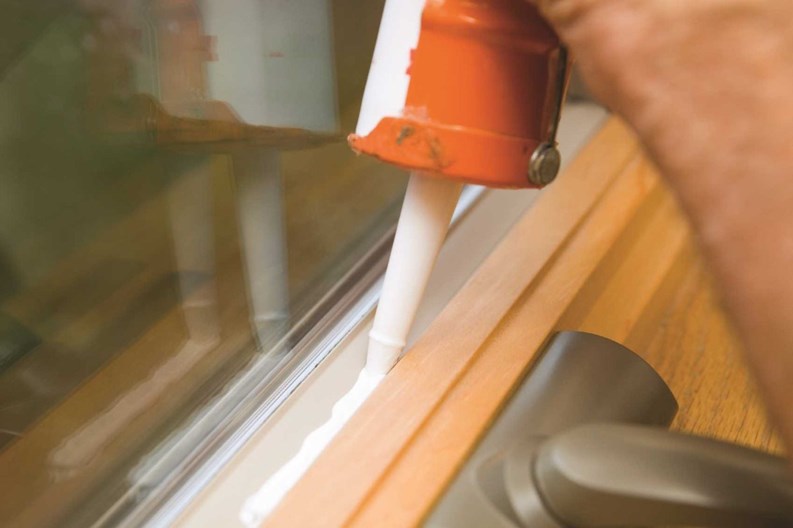With the possible exception of fire, nothing is more damaging to residential buildings and the property of their occupants as leaks. Whether it’s a torrential deluge from the upstairs neighbor’s overflowing bathtub or a slow, seeping leak around the window frames, water causes huge amounts of physical damage, and can contribute to the proliferation of mold—and all the potential health hazards that represents.
And though condo boards never enjoy addressing the perennial problem of weatherproofing, seasonal reviews allow unit owners and board members to catch small maintenance items before they become major repair bills.
That’s why it’s vital for buildings to make sure their structure is as waterproofed as it can possibly be, and that any breaches in their building envelope are dealt with swiftly and competently.
“The exterior façade of the building is the building envelope,” says Jason Green, general superintendent of Prachel Painting, Waterproofing & Restoration in Boca Raton. “It’s the frame of a building. The building’s frame is exposed to water and sun so it’s absolutely necessary that it’s weatherproofed properly. Building wrap is one of the most important aspects of a building envelope.”
Building wrap is generally installed prior to the building’s exterior façade and helps protect against air and water infiltration while allowing harmful moisture vapor to escape the wall cavity. Building wraps can hold up to the rigors of residential job sites because of its increased tear strength, durability and ability to withstand extended UV exposure. Certain building wraps may contribute towards U.S. Green Building Council LEED points.
The Main Culprits
Experts agree that any part of a building exposed to the elements is prone to wear-and-tear and has the potential to be an entry point of moisture penetration and water intrusion.
“Windows, concrete spalls on the building, the edge of the roof and top of the roof are all spots that are vulnerable to water damage,” says Michael Ramos, a project manager with Western Waterproofing Company in Pompano Beach. “If the building has an expansion joint water can get in there and cause a lot of problems.”
“Exterior bases of buildings are also vulnerable spots for water damage,” adds Green. “Terraces are another way for water to get in.”
Weather, poor construction, building age and human error can also cause a building to develop leaks. Old and new buildings are both susceptible to water damage. Shoddy construction on newer buildings can lead to a leaky façade and older buildings have more than likely experienced damage due to numerous years of exposure to the elements.
“If a co-op or a condo had a paint job and that painter applied a patch compound in the areas that had cracks then there shouldn’t be any leaks from those areas,” says Barrington Watson, owner of Watson’s Painting & Waterproofing Company in Lauderdale Lakes. “But if it was a poor paint job that’s a totally different thing. It’s a good idea for co-ops and condos to have their buildings assessed for leaks every five or seven years. If you suspect you had a bad paint job, it should be done within a year or two.”
Seepage and water damage aren’t strictly above ground problems. A common area in which buildings experience leaks is the foundation, because cracks often occur in the foundation wall.
In fact, say experts, ventilation is a key factor in nearly all areas of condo construction—including often overlooked basement and wall cavities, so it is mandatory that the wall below ground level is sealed to prevent the entrance of moisture. Structural waterproofing is the term used to describe when a wall below ground level is sealed to prevent the admission of moisture. With below-ground conversions, various structural pressures can complicate things. That’s why all possibilities have to be reviewed by a professional surveyor before action is taken.
An Issue of Ownership
Most condominium bylaws are written in such a way as to stipulate that the window belongs to the unit owner but the structure or frame around the window belongs to the association. So weatherproofing buildings can be a tricky proposition when one considers the unique challenges associations often face with respect to door and window replacement.
“Things vary from association to association,” says Ramos. “When it comes to simple stuff like caulking windows sometimes the unit owner pays and other times the tenants will pay the association and they will use that money for maintenance issues like waterproofing.”
“Most of the time things like window caulking is covered by the condo and if it’s not it should be,” adds Green. “Associations should also pay to upgrade windows. And if a unit owner wants to upgrade for high impact they should pay for that. High impact windows are important in Florida, especially during the summer months and that also tends to be the rainy season, roughly May through September. And let’s not forget hurricane season.”
In addition to the unique ownership issues of door and window replacement, unit owners will eventually realize that it’s also difficult to address a roofing issue without addressing siding and at some point you may have to consider integrating the projects together.
“It is possible to do a separate waterproofing roof project and a separate window or siding project but it’s best to do everything at the same time if money isn’t an issue,” says Ramos. “Usually a building has an expansion joint that will run along the side of the building or up towards the roof and it’ll go across a roof. And that way the roofers will take care of the expansion joint and if the waterproofers are on site at the same time, they can terminate that joint seam going towards the building. The waterproofer can pick it up and make sure it’s a tight seal so that’s a good advantage, but it’s not necessary.”
Identifying Problems
It is better to head off problems before they start, so waterproofing and weatherproofing experts recommend setting up a maintenance plan to deal with leaks and repairs before they occur and before they get out of hand.
“It’s important to maintain window joints,” says Ramos. “You have to make sure they are properly caulked. A urethane caulk joint has a life span of five years, so you want to make sure you replace that joint every five years.”
“You should also keep gutters clean to prevent flooding,” says Green. “Gutters should be cleaned twice a year. Before fall and after fall.”
In addition to leaks, there are other signs that a building is having waterproofing problems. “Signs that show you could have water intrusion are cracks,” says Green. “You would also see deteriorated caulking around the windows. Or the exterior paint may start to bubble. Sometimes if you pop the paint bubble, water will come out of it.”
Despite its appearance as an external weather barrier, experts say even the most modern siding materials were not designed as complete protection against moisture.
Whether windows, roofing, or siding, when the time does come to discuss large scale updating, money worries often affect association decision making—a problem that may seem even more daunting in a down economy.
There are various ways waterproofers identify problem areas if leaks are not glaringly obvious. “If there are no leaks, it can be very hard to identify problem areas,” says Watson. “If you have leaks, you can test that area but if you don’t it’s not easy. You can use a water hose and hose down the area. If you do that sometimes you can tell exactly where the leaks are coming from.”
Additionally, leak hunters will simulate heavy rainfall, use small digital cameras similar to what a cardiologist or plumber uses and infrared moisture detectors that supply an x-ray of any flat surface where moisture may be trapped. You can also use a moisture meter, which can be bought in any local hardware store.
In the end, say the experts, talk about weatherproofing with your contractors and management team in a reasonable manner. Then have an open conversation with your residents at board meetings and remember to keep them informed with newsletter updates so that they can monitor the ongoing project.
Matthew Worley is a freelance writer and a frequent contributor to The South Florida Cooperator.







2 Comments
Leave a Comment